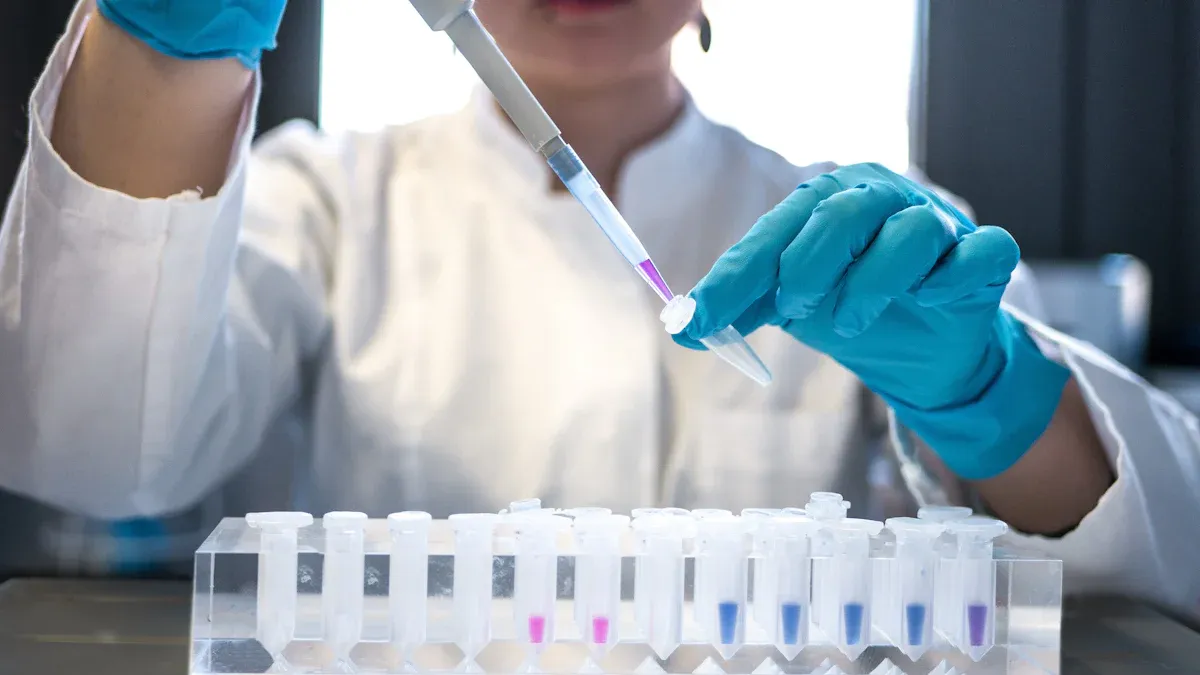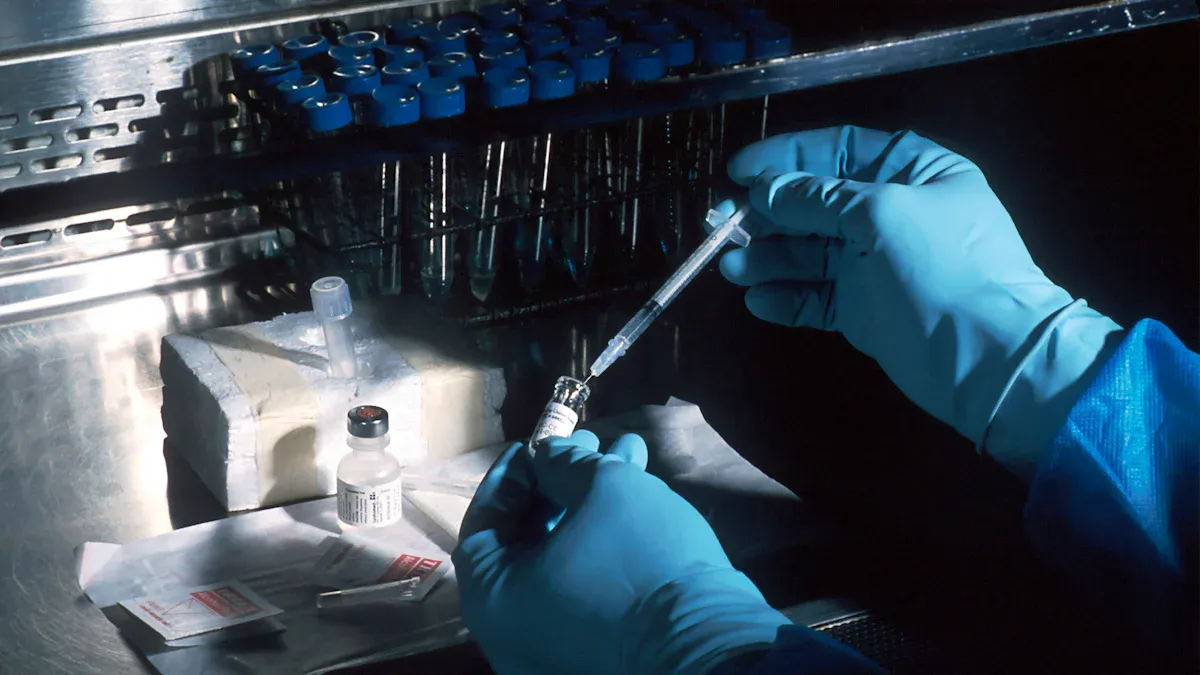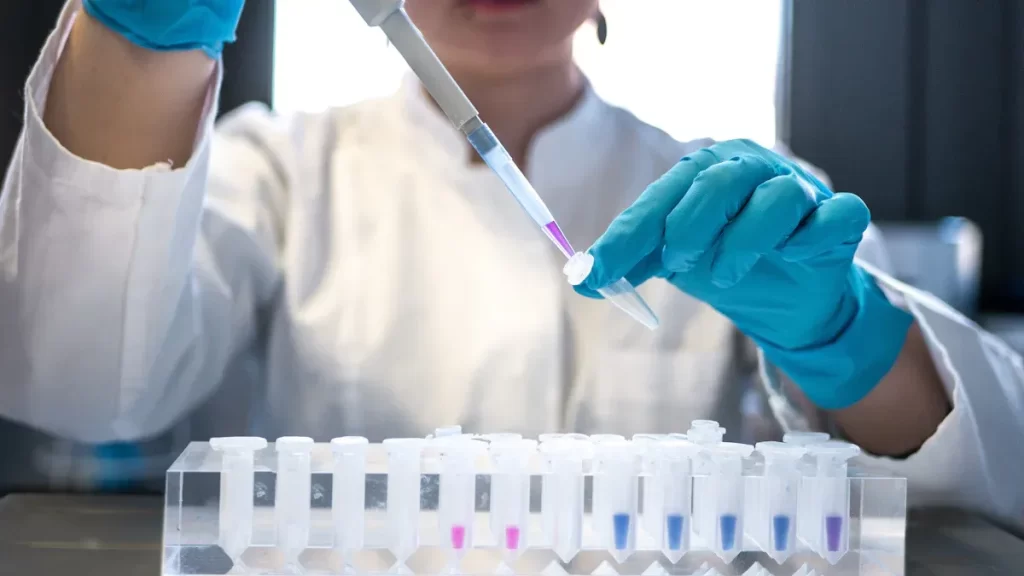News & Events
What Makes an Analyte So Important Today

Have you ever wondered how doctors know the exact amount of sugar in your blood or how scientists check if drinking water is safe? The answer often comes down to the analyte. An analyte is a substance or chemical part that you want to find and measure in a sample, like blood or water. Knowing what the analyte is and how much of it exists helps experts make important decisions that affect your health and safety every day.
Key Takeaways
- An analyte is the specific substance you measure in a sample, like sugar in blood or salt in water. Understanding analytes helps make informed health and safety decisions.
- Reliable testing methods are crucial. They must be specific, accurate, and precise to ensure trustworthy results. This is essential for both healthcare and environmental safety.
- Biosensors play a vital role in healthcare by quickly converting analyte presence into measurable signals. This technology helps in early disease detection and effective treatment monitoring.
- Analyte testing impacts daily life. It ensures the safety of food and water, guiding choices that protect health and well-being.
- Innovations in analyte analysis, such as advanced sensors and AI, are making testing faster and more accurate. This will enhance healthcare and safety standards in the future.
What Is an Analyte?
Definition
You often hear the word analyte in science, but what does it really mean? An analyte is the specific substance you want to find or measure in a sample. Imagine you have a glass of water. If you want to know how much salt is in it, salt becomes the analyte. The rest of the water, which is not salt, is called the matrix. This makes the analyte different from other parts of the sample because it is the main focus of your test.
Think of the analyte as the “star” of your science experiment. You look for it, measure it, and use the results to make important decisions.
Key Features
You can spot an analyte by looking for certain features. Scientists use these features to make sure they measure the right thing and get accurate results. Here is a table that shows the main characteristics of an analyte:
| Characteristic | Description |
|---|---|
| Identification and Quantification | You must be able to find and measure the analyte in your sample. |
| Forms | Analytes can be acids, bases, salts, or other compounds. |
| Measurement Techniques | You often need special tools to measure small amounts of analytes. |
| Reaction Behavior | The analyte may react during tests, like in titrations, to help you measure it. |
When you measure an analyte, you want your method to be strong and reliable. Scientists call this “robustness.” A robust method gives you the same results even if things like temperature or equipment change a little. You also want the signal, or the reading you get, to match the amount of analyte in your sample. This helps you know exactly how much is there.
Analytical methods also need to meet certain standards. These include being specific (only measuring the analyte you want), accurate (giving the true value), and precise (giving the same result every time). These features make sure you can trust the results.
Analyte in Modern Science

Role in Testing
You rely on scientific testing every day, even if you do not notice it. When you want to know if your water is safe or if your food is fresh, scientists look for specific substances called analytes. These substances help you get answers you can trust. The accuracy and reliability of scientific tests depend on how well you can find and measure the analyte. If a test cannot tell the difference between the analyte and other substances, the results may not be correct. Scientists use methods that focus on specificity, accuracy, and precision. These qualities make sure the test gives you the true value and the same result each time.
Testing methods also have limits. You need to know the smallest amount of an analyte that a test can find or measure. This helps you trust that the results are real, even when the analyte is present in tiny amounts. Regulatory agencies set standards for these tests. They create reference systems and use special materials to check that every lab gets the same results. You can see this process in three main steps:
- Agencies set up a reference system with trusted methods and materials.
- Labs use this system to calibrate their own tests.
- Labs check that their results match by testing real samples and comparing outcomes.
Scientists use many techniques to find and measure analytes. Here is a table that shows some of the most common methods:
| Technique Type | Description |
|---|---|
| Chromatography | Analyzes and separates complex mixtures based on physical and chemical properties. |
| Gas Chromatography (GC) | Analyzes volatile and semi-volatile organic compound mixtures. |
| High-Performance Liquid Chromatography (HPLC) | Tests polymer antioxidants, UV absorbers, and other non-polar compounds. |
| Spectroscopy | Involves interaction of matter with electromagnetic radiation to determine molecular structure. |
| Ultraviolet-Visible Spectroscopy (UV-Vis) | Determines how much UV and visible light are absorbed and transmitted by the sample. |
| Microscopy | Provides understanding of structural features on micro and nano scales. |
| Optical Microscopy (OM) | Magnifies a sample area by 10x to 1,000x using visible light. |
| Electrochemical Analysis | Determines chemical reactivity of solutions through oxidation or reduction reactions. |
| Cyclic Voltammetry (CV) | Studies electron transfer-initiated chemical reactions. |
These tools help you get clear answers about what is in your sample. You can trust the results because scientists follow strict rules and use proven methods.
Importance in Healthcare
You see the impact of analytes in healthcare every time you visit a doctor or get a lab test. Doctors use analyte testing to diagnose and monitor diseases. For example, when you get a blood test, the lab checks for specific analytes like glucose, cholesterol, or certain proteins. These results help your doctor understand your health and decide on the best treatment.
Biosensors play a big role in modern healthcare. They turn the presence of an analyte into a signal that you can measure. This makes it easier to find diseases early and track how well treatments work. Here are some ways analytes help in healthcare:
- Biosensors convert the recognition of analytes into signals, which helps doctors diagnose diseases quickly.
- Glucose sensors have changed how people manage diabetes by allowing fast and easy blood sugar checks.
- Biosensors can find bacteria or viruses in your body, so doctors can choose the right treatment faster.
- Point-of-care tests use biosensors to give results right where you are, not just in a big lab.
- Enzyme and DNA-based sensors help find cancer markers and other important signs of disease.
- These tools make healthcare more efficient and help doctors act quickly.
You might wonder what analytes doctors test most often. Here are some common examples:
- Basic metabolic panel: checks blood urea nitrogen, calcium, glucose, and sodium.
- Blood culture: looks for bacteria or fungi in your blood.
- Complete blood count: measures red and white blood cells.
- Glucose: tests how your body handles sugar.
- Lipid panel: checks cholesterol and fats.
- Liver function tests: measure markers like albumin and bilirubin.
- Pregnancy test: finds out if you are pregnant.
- Thyroid function tests: check how your thyroid works.
- Urinalysis: examines your urine for different substances.
- Vitamin levels: such as Vitamin B12 and Vitamin D.
Tip: When you get a lab test, you are really checking for one or more analytes. These results help you and your doctor make smart choices about your health.
Analyte Applications
Healthcare
You see analyte testing every time you check your blood sugar or get a lab test at the doctor’s office. Blood glucose monitors help people with diabetes track their sugar levels. These devices use small drops of blood to measure glucose quickly and accurately. Here is a table showing some common blood glucose monitors and how they work:
| Blood Glucose Monitor | Sample Type | Sample Size | Performance Metrics |
|---|---|---|---|
| MediSense Precision Xtra | Capillary | 12 samples | Within-monitor CV, total within-monitor CV |
| Accu-Chek Inform | Arterial | 613 samples | Accuracy, effect of chemical interference |
| StatStrip | Venous | 1703 samples | Accuracy (bias), ISO 15197 criteria |
| Glucomen PC | Whole Blood | 45 samples | Accuracy, analytical range |
| Precision Xcceed | Capillary | 115 samples | Accuracy, error grid analysis |
Doctors also use analyte tests to check cholesterol, liver function, and vitamin levels. These results help you and your doctor make smart choices about your health.
“The stakes are high. Analytical findings not only inform health standards but also directly shape policies that safeguard entire populations.” – Dr. Olivia Green
Environment
You depend on clean air, water, and soil. Scientists use analyte detection to find pollutants and keep your environment safe. For example, they test water for lead, pesticides, and bacteria. These tests help protect your family from harmful substances. The table below shows how analyte testing supports environmental safety:
| Source | Description |
|---|---|
| Environmental analysis (water, air, soil) | Detects and measures pollutants, helps with pollution assessment |
| Analytical methods for contaminants | Uses advanced tools to analyze water and support cleanup efforts |
| Biosensors for environmental monitoring | Finds impurities and helps reach sustainability goals |
Public health campaigns often share these results to raise awareness about risks, such as high lead levels in drinking water.
- Public Awareness Campaigns: Analytical results are shared to help you understand and avoid health risks.
Industry
You rely on safe food and products every day. Factories use analyte testing to check for harmful substances in food, like bacteria, metals, and allergens. This keeps your food safe and prevents costly recalls. Here are some common techniques used in food safety:
| Analytical Technique | Application in Food Safety Analysis |
|---|---|
| Molecular Diagnostics (PCR) | Finds pathogens and GMOs in food |
| ICP-MS | Detects trace metals for safety compliance |
| Atomic Absorption Spectroscopy | Measures metal concentrations in food |
| ELISA | Detects allergenic proteins |
| HPLC | Measures vitamins and preservatives |
| GC-MS | Separates and detects complex food compounds |
Food companies save money and protect their reputation by using fast, accurate analyte tests. If raw materials are contaminated, companies cannot use them, which leads to financial loss. Multi-analyte testing also saves time and reduces waste, making labs more efficient.
“The future of our field holds immense potential. By embracing change and innovation, we can pave the way for breakthroughs that enhance both science and society.” – Dr. Robert K. Smith
Everyday Impact

Daily Life
You interact with analyte testing more often than you might think. When you drink water, you trust that it is free from harmful substances. Scientists test for things like lead and bacteria to keep your water safe. Grocery stores rely on analyte testing to check for pesticides and germs in fruits and vegetables. This helps you avoid getting sick from contaminated food.
Your health products, like sunscreen and toothpaste, also go through strict testing. Companies check for unwanted chemicals and make sure the products work as promised. Even small traces of certain substances can cause concern. Sometimes, the presence of a tiny amount of a chemical leads to legal cases, even if the product meets safety rules. People on juries may expect zero tolerance for these substances, which can affect the outcome of trials.
| Evidence Point | Description |
|---|---|
| Influence on Litigation | The presence of trace substances can lead to legal challenges, affecting product safety perceptions even if regulatory standards are met. |
| Jury Perception | Potential jurors may adopt a ‘zero tolerance’ attitude towards trace substances, impacting the outcome of trials despite evidence of product safety. |
| Risk Assessment | Analytical testing alone may not demonstrate realistic health risks, highlighting the need for comprehensive evaluation beyond just testing results. |
Decision-Making
You use information from analyte testing to make choices every day. When you hear about a food recall, you decide whether to buy or eat certain products. Health officials use analyte analysis to find and stop outbreaks, like when the FDA and CDC worked together to remove contaminated apple juice from stores. These actions protect you and your family from illness.
Public health agencies collect data from analyte tests to track diseases and improve food safety. They use this information to create better policies and keep you informed about risks. You benefit from these efforts through safer food, cleaner water, and healthier environments.
Tip: The results of analyte testing guide your daily decisions, from what you eat to the products you trust. By understanding these results, you can make safer and smarter choices.
Future of Analyte Analysis
Innovations
You will see many exciting changes in how scientists find and measure substances in the future. New tools and methods make it easier to detect even the smallest amounts of important chemicals. Here are some of the latest breakthroughs:
- Nano-ESI (nano-electrospray ionization) helps you find very tiny amounts of biomolecules.
- MALDI (matrix-assisted laser desorption/ionization) now uses new materials to give clearer and more detailed results.
- Ambient ionization methods, like DESI and DART, let you test samples quickly without much preparation.
- Orbitrap mass spectrometry gives you sharper and more accurate results for complex samples.
- FT-ICR mass spectrometry offers the highest level of detail for mixtures with many different parts.
Sensor technology is also changing fast. You can see these improvements in the table below:
| Aspect | Description |
|---|---|
| Sensitivity | New nanomaterials help you detect even the smallest amounts. |
| Selectivity | Sensors now tell the difference between many substances in one sample. |
| Real-time Monitoring | Smart sensors use AI and the Internet of Things to give instant results. |
| Application Scope | Better sensors mean you can use them in more places, like hospitals and nature. |
Note: These innovations help you get faster, more accurate answers, which means safer products and better health.
Growing Importance
You will notice that analyte testing matters more each year. Many trends show why this is true:
- Healthcare now uses artificial intelligence and precision medicine to give you better care.
- Doctors and scientists focus more on treatments made just for you.
- Big data tools helped track and control diseases during the COVID-19 pandemic.
- Industry 4.0 and digital transformation bring advanced technology into labs and factories.
The need for analyte testing keeps rising. Market research shows strong growth:
| Year | Market Size (USD Million) | CAGR (%) |
|---|---|---|
| 2024 | 7664.65 | N/A |
| 2025 | 8226.47 | N/A |
| 2033 | 14487.13 | 7.33 |
You will also see more rules and higher standards for testing. Companies use new tools and automation to keep up. Governments support these changes with new programs and funding. All these factors mean that analyte analysis will play an even bigger role in your health, safety, and daily life.
You see the importance of the analyte in every part of your life. In healthcare, labs measure analytes to give doctors information that leads to better care. New technologies, like AI, help experts process this data quickly and accurately. You can spot the impact of analytes in your daily routine by noticing how data comes together, how feedback reveals trends, and how charts make information clear.
- Data integration brings different sources together.
- Sentiment analysis helps you understand feelings in feedback.
- Theme identification shows you common topics.
- Visualization tools turn complex results into simple pictures.
Take a moment to appreciate how these unseen helpers shape your world.
FAQ
What is an analyte in simple terms?
An analyte is the substance you want to find or measure in a sample. For example, if you test blood for sugar, sugar is the analyte.
Why do doctors test for analytes?
Doctors test for analytes to check your health. They look for things like glucose or cholesterol. These tests help them find problems early and choose the best treatment.
How do scientists measure analytes?
Scientists use special tools like sensors, chromatography, or spectroscopy. These tools help them find and measure small amounts of analytes in samples.
Can analyte testing keep my food safe?
Yes! Food companies test for analytes like bacteria, metals, or allergens. This helps keep your food safe and prevents you from getting sick.
Where do I see analyte testing in daily life?
You see analyte testing when you use a blood glucose meter, drink tap water, or buy food at the store. These tests help protect your health every day.

